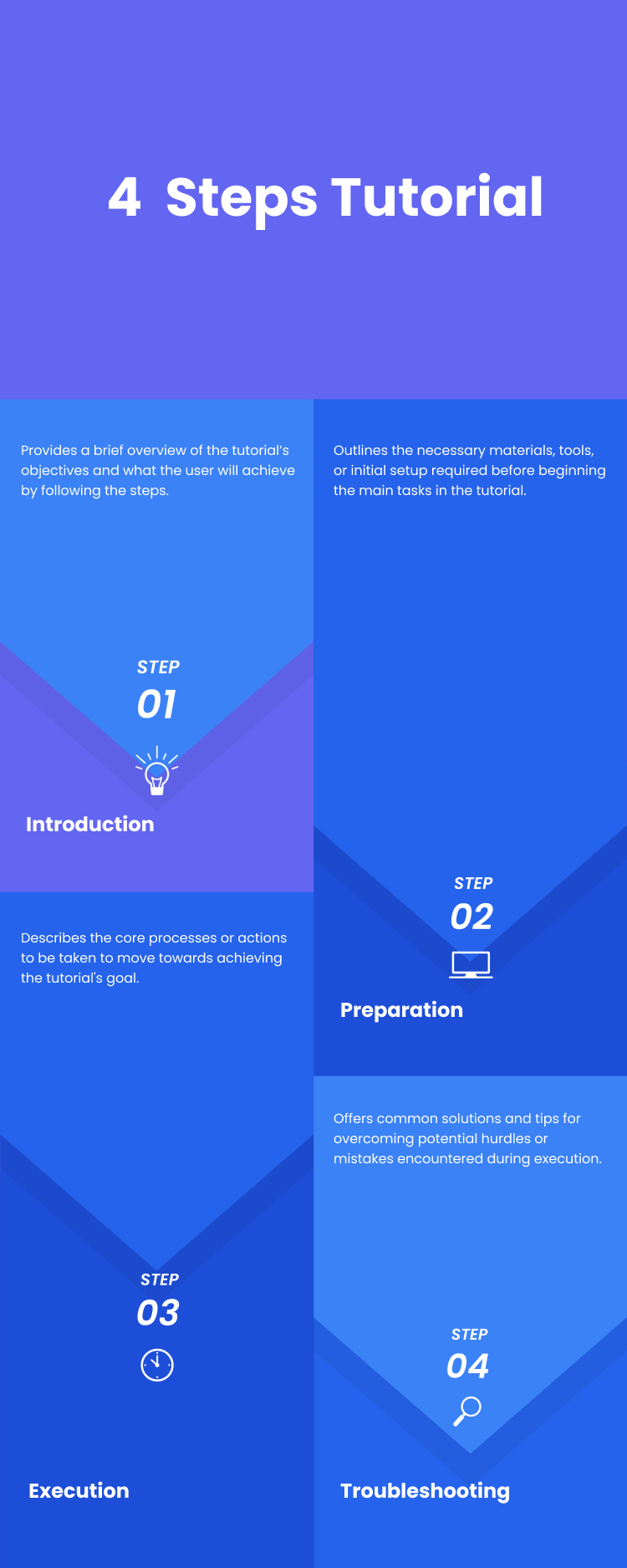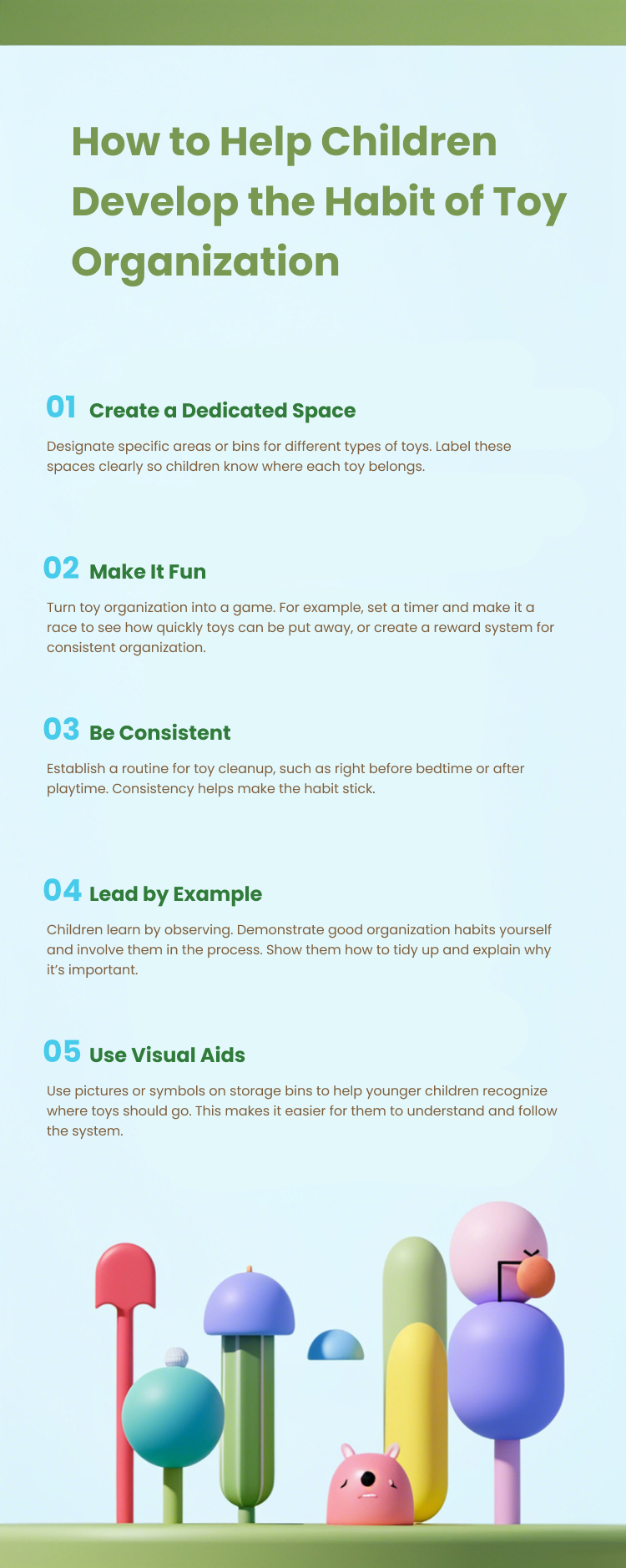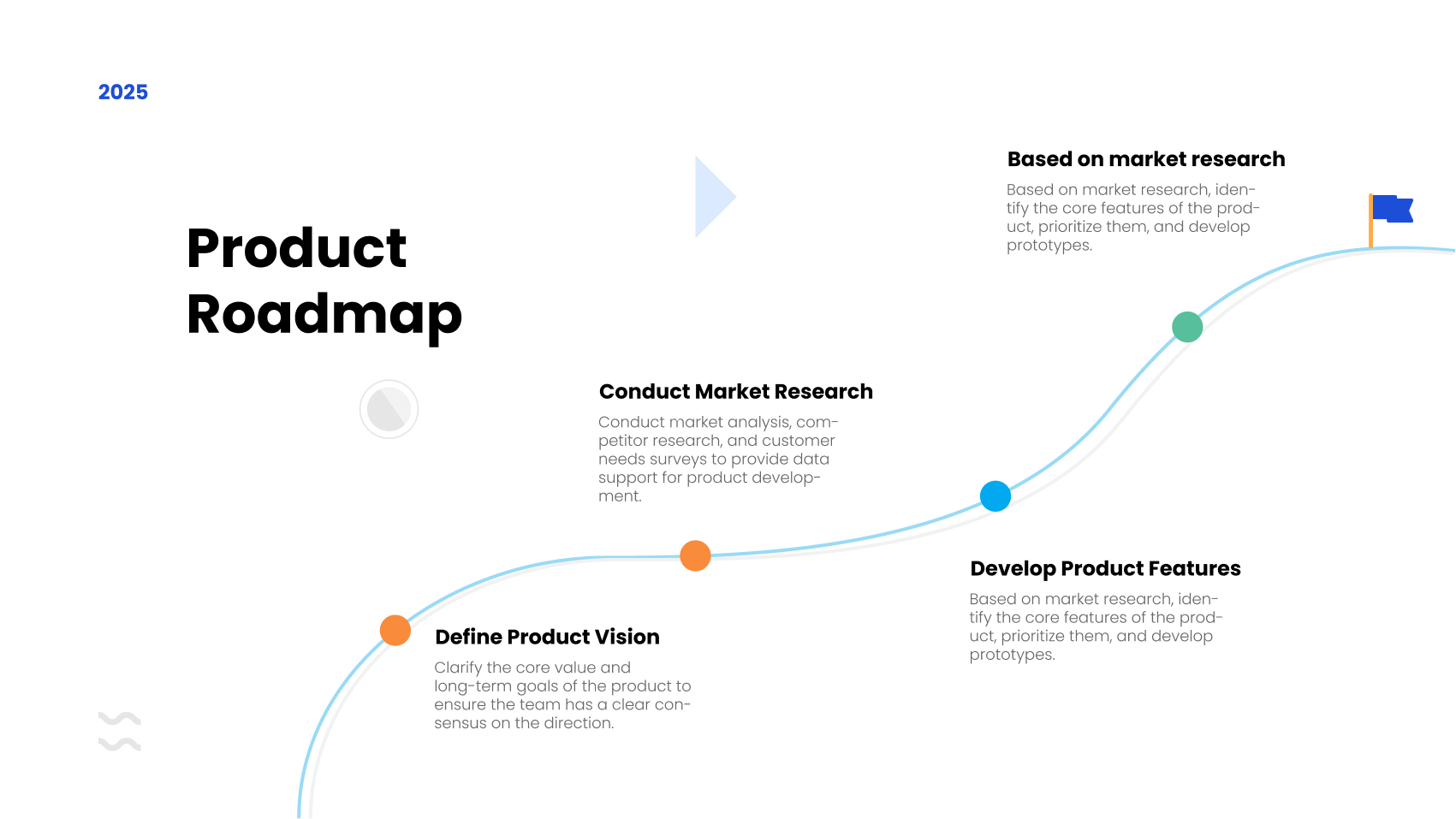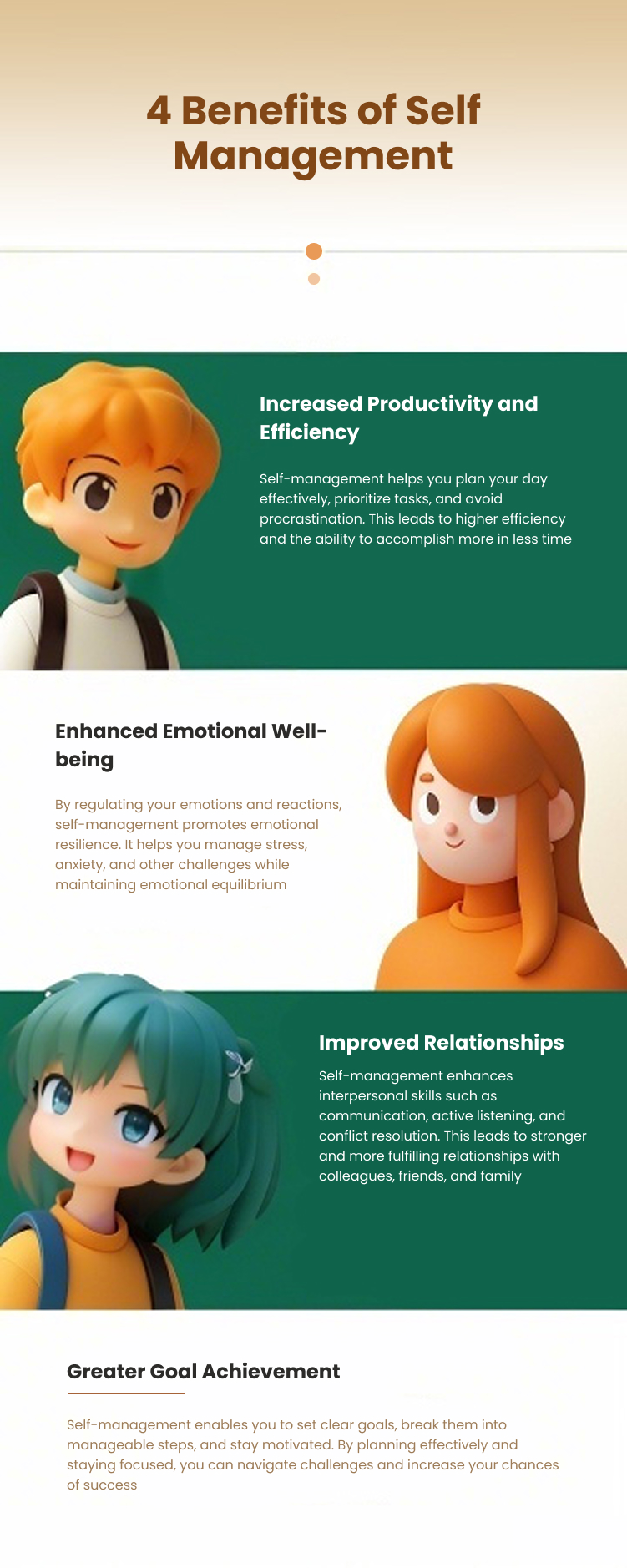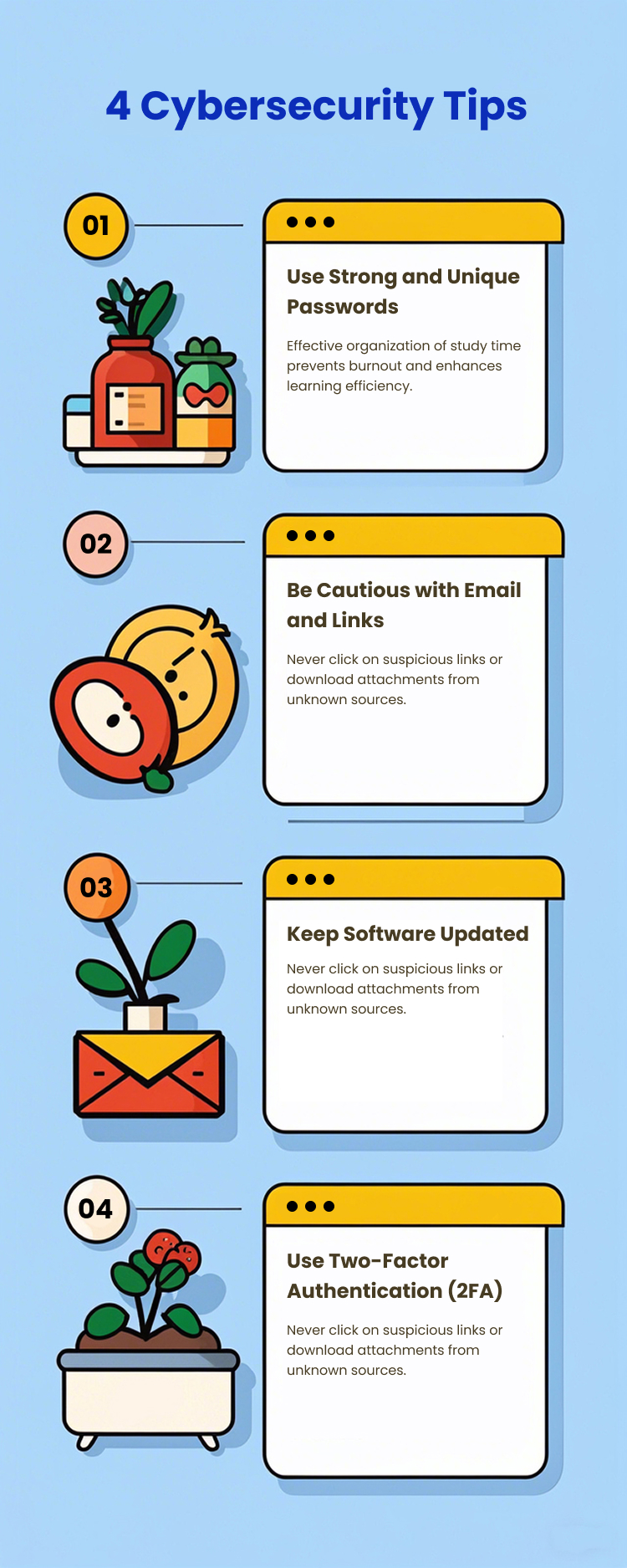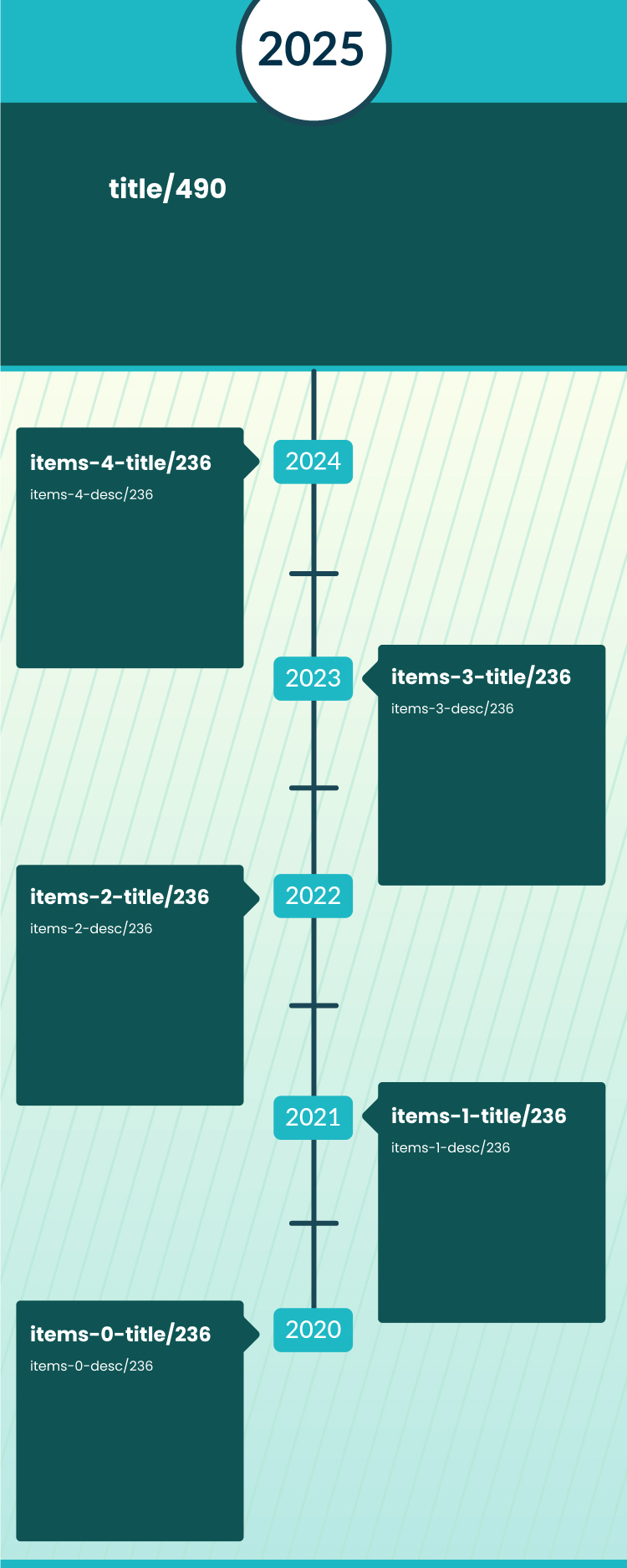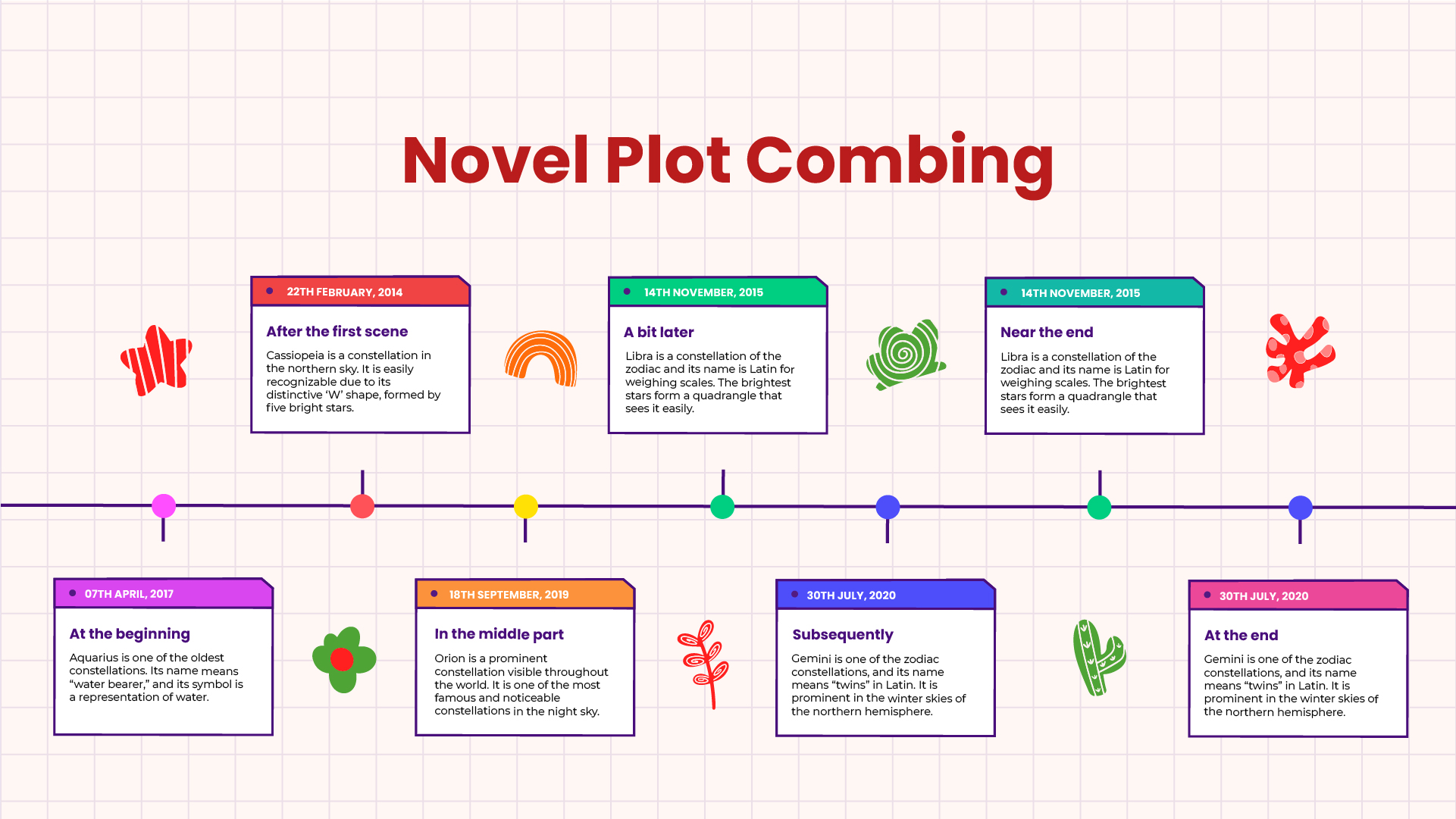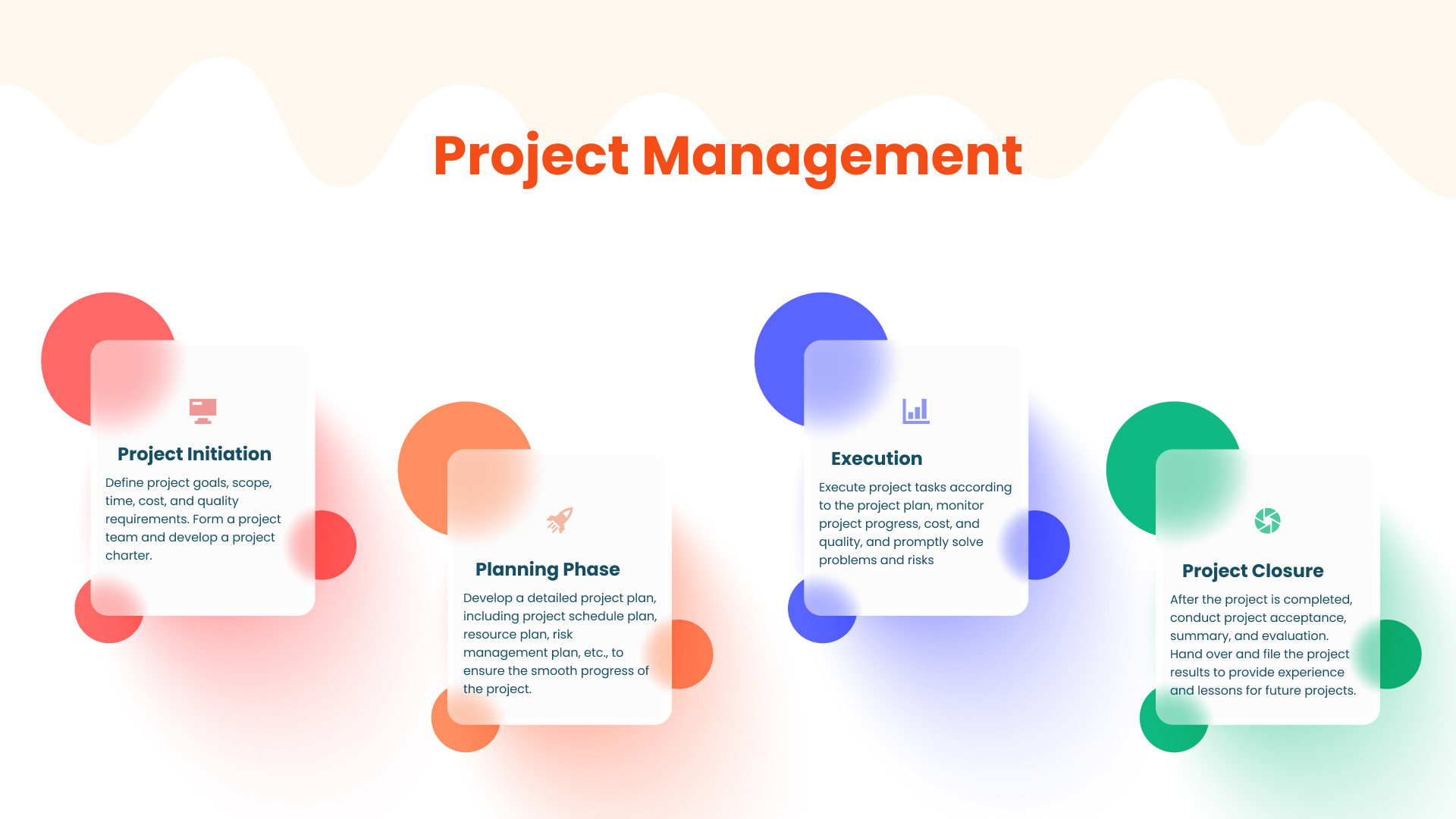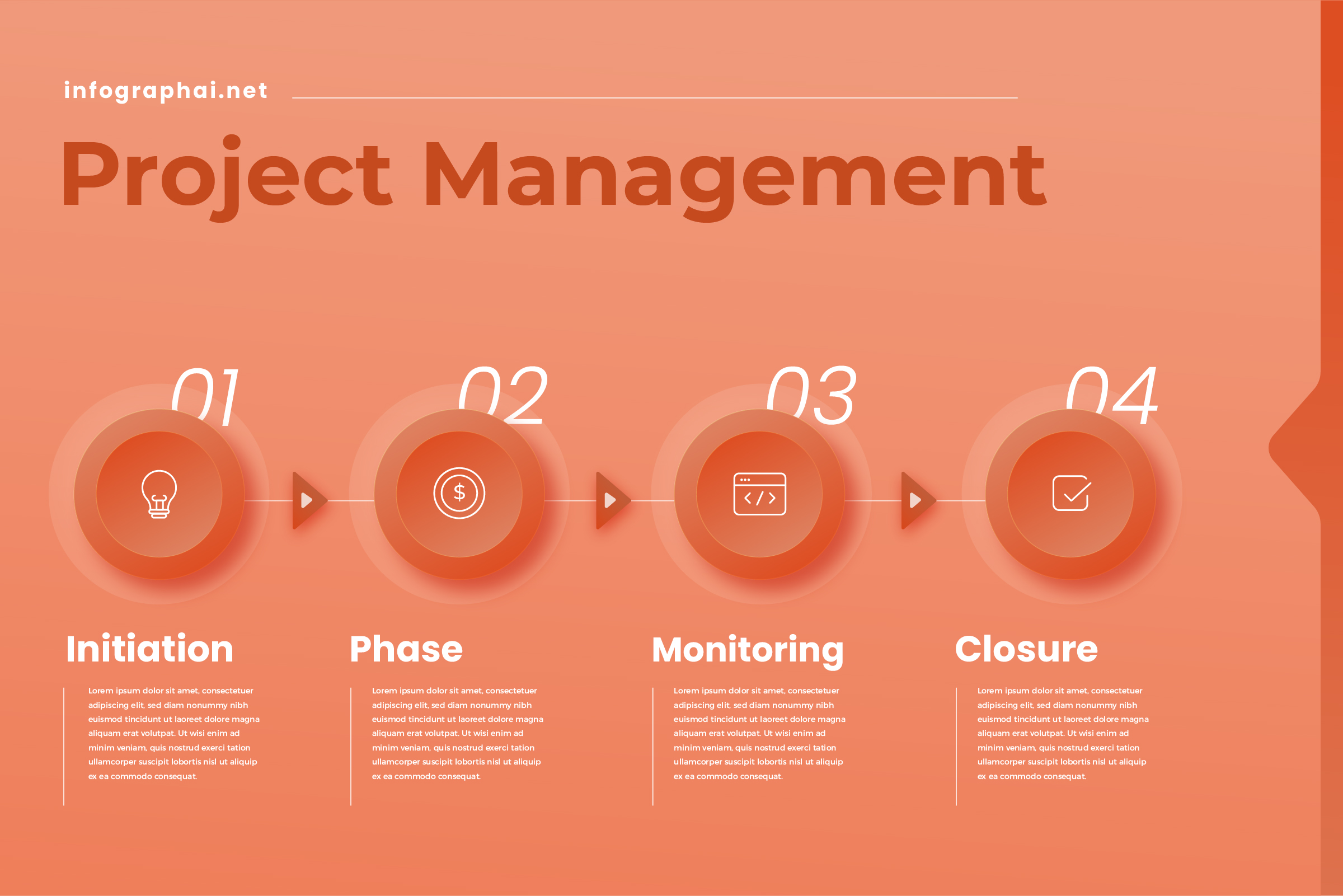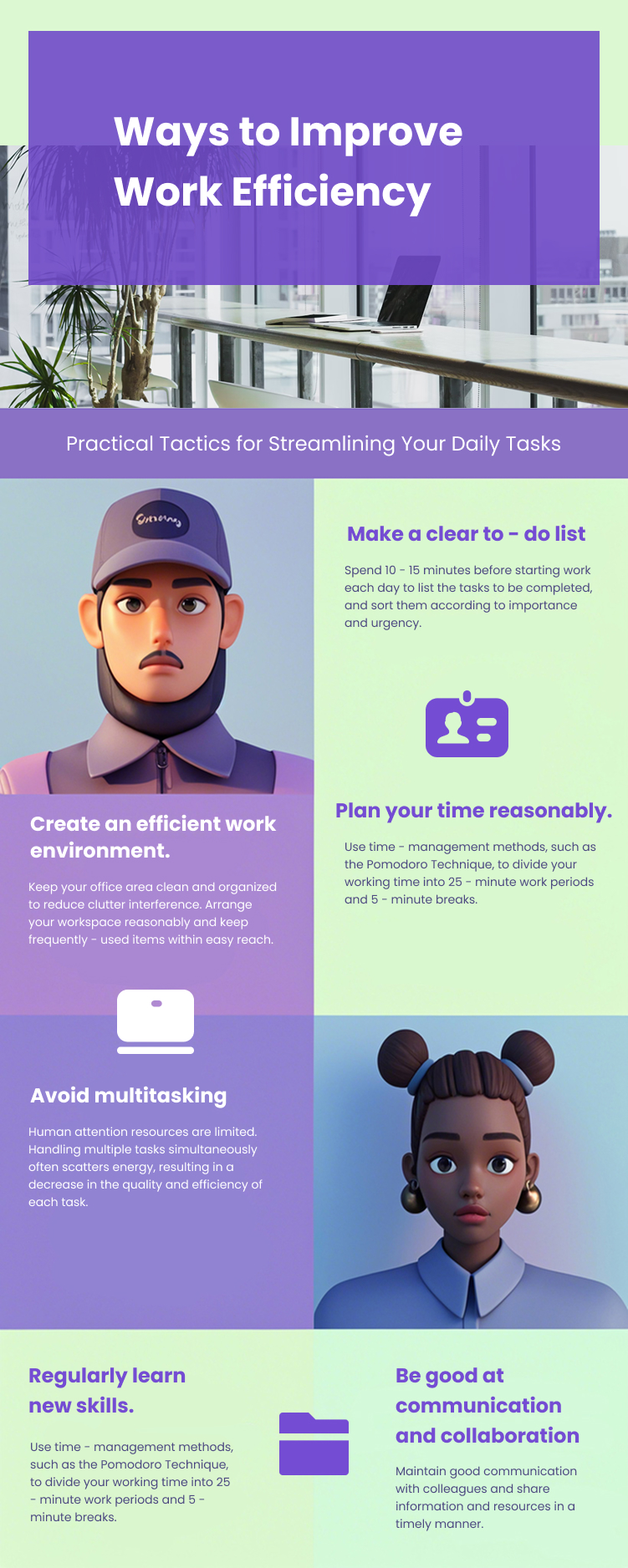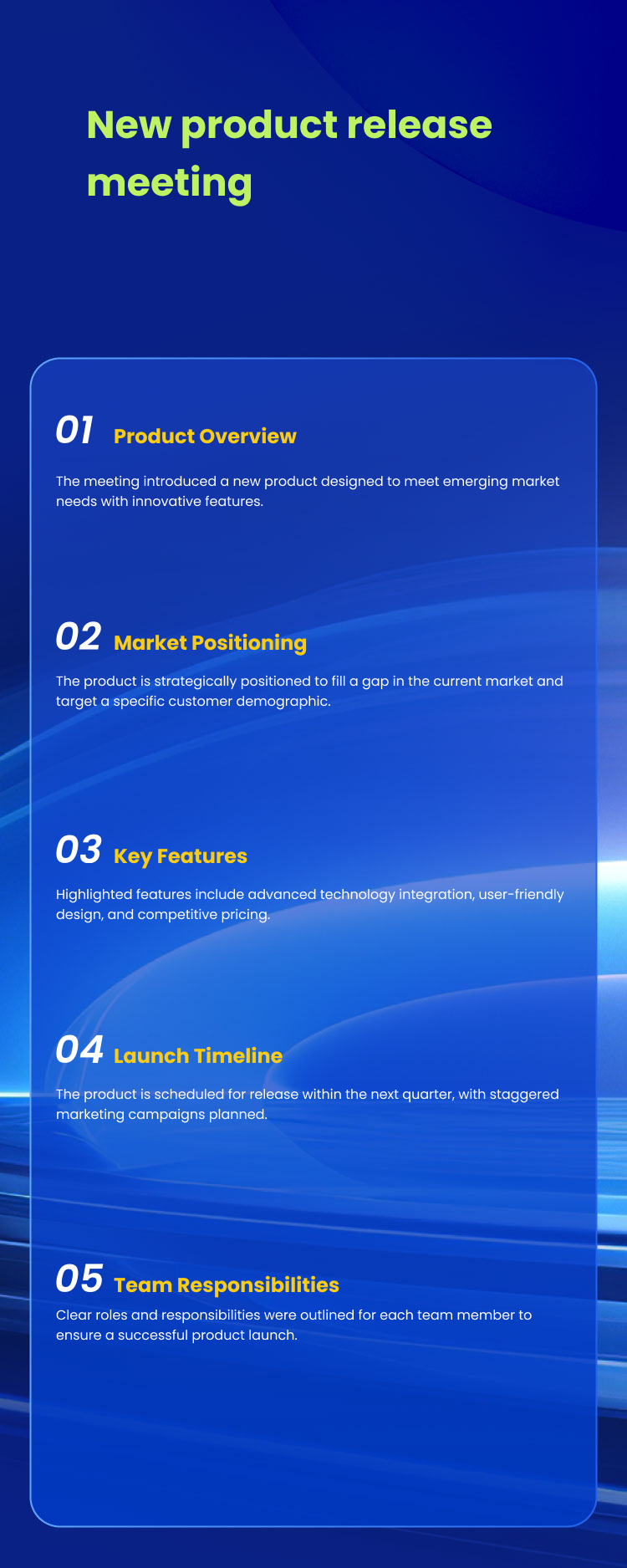4 steps tutorial Infographic Template
"5 Essential Steps for an Effective 4-Step Tutorial: From Planning to Execution"
-
Define Clear Objectives
Start by outlining the tutorial's purpose and learning outcomes, ensuring each step aligns with a specific goal (e.g., "How to Create an Affiliate Profile" focuses on professionalism and trust-building). Use action-oriented language like "achieve" or "master" to motivate learners, as seen in programming tutorials that break down complex tasks into manageable steps. -
Structure Sequential Steps
Organize content logically, such as "Introduction → Setup → Execution → Review," mirroring procedural texts like "How to Play Snakes and Ladders" with clear material lists and methodical instructions. Ensure each step builds on the previous one, similar to Java tutorials that progress from basics to advanced applications. -
Simplify Complex Concepts
Use analogies or visual aids (e.g., flowcharts for programming loops) to demystify technical topics, akin to survival analysis tutorials that compare statistical methods to everyday scenarios. Avoid jargon unless defined, as seen in cybersecurity guides that explain terms like "penetration testing" plainly. -
Incorporate Practical Examples
Provide real-world applications, like linking ChatGPT to data analysis projects for automated reports, which enhances engagement and relevance. Include troubleshooting tips or common pitfalls, as done in steel plant simulations that detail error-handling during process automation. -
Test and Refine
Pilot the tutorial with target users to identify gaps, similar to academic writing workshops that iteratively improve AI-assisted drafting techniques. Gather feedback to adjust pacing or clarity, ensuring accessibility for diverse learners, as emphasized in transmedia educational designs.
